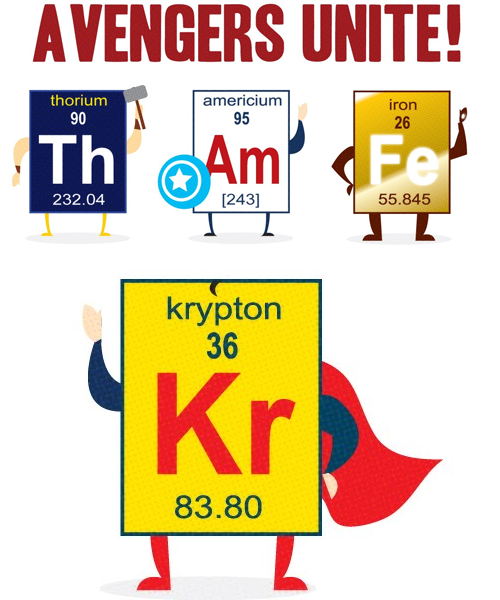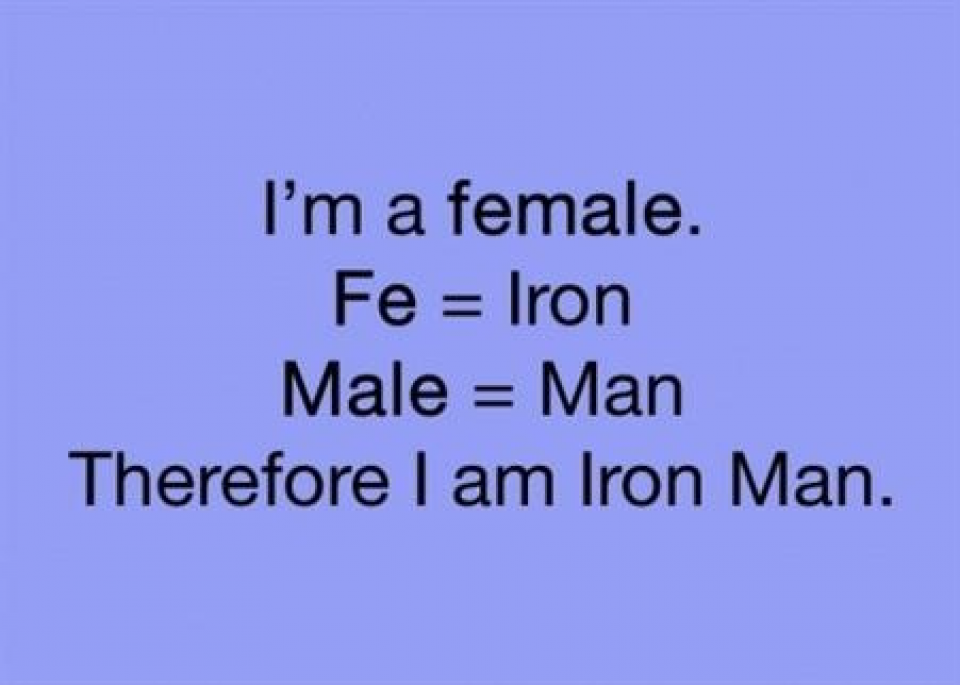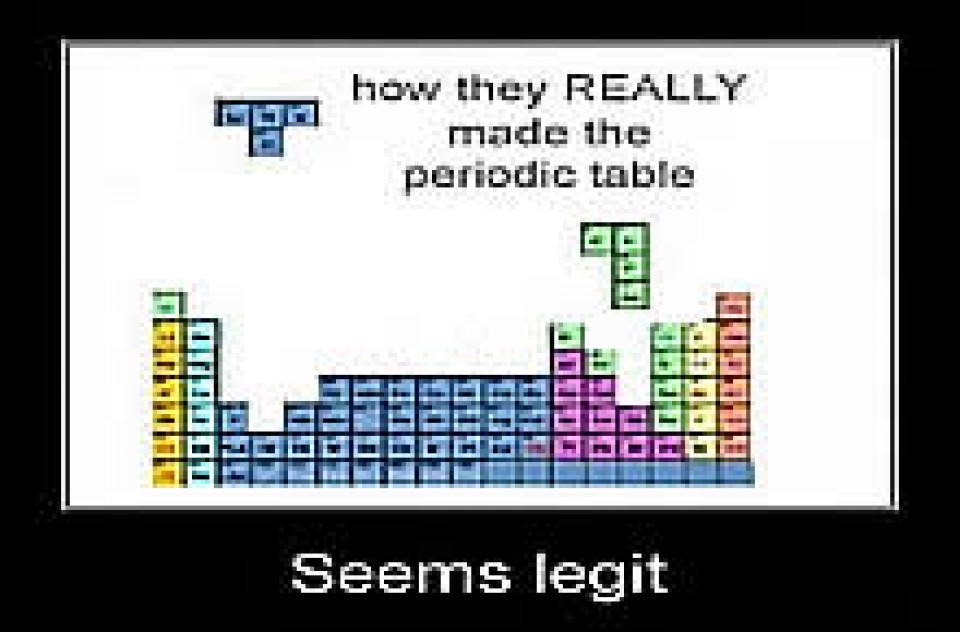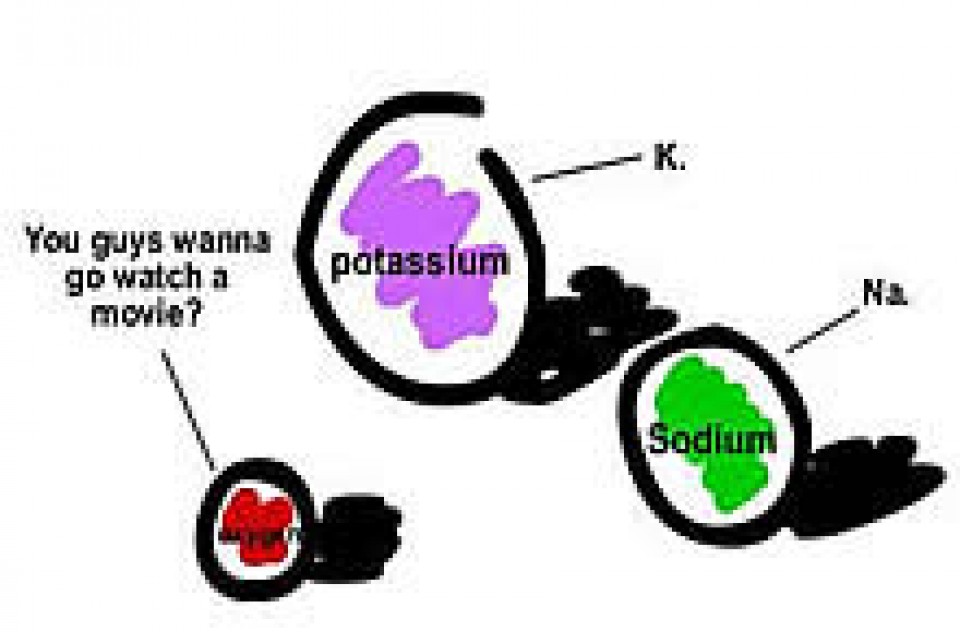[View the accompanying Atomic Mass Practice Problems Part I here.]
Atomic Mass
The atomic mass is an experimental number determined from all of the naturally occuring isotopes of an element. As we saw in our lesson on atomic structure, not all atoms of an element are identical. For example, hydrogen has three different isotopes that occur in nature – 1H, 2H, 3H. So when you look on the periodic table and see that it has an atomic mass of 1.01 amu, that is the average of the masses of all three isotopes, not just one of them.
Notice that the units were listed as amu, which stands for atomic mass units. This unit is based off the mass of the isotope 12C (carbon-12). Carbon-12 was chosen as the basis for all of the masses on the periodic table and has been defined to be exactly 12 amu. So all of the other masses on the period table are relative to the mass of carbon-12. In that case, then why is the atomic mass of carbon on the periodic table not exactly 12 amu? Because not all carbon in nature is 12C! Most of it is 12C, some of it is 13C, and a very tiny amount is 14C. When these are averaged together you get the average atomic mass shown on the periodic table of 12.01 amu.
Since the abundances are not equal, we cannot do a typical simple average where we just add them up and divide by three. Instead, we need to perform a weighted average. The formula to calculate the average atomic mass is:
average atomic mass = ∑(relative abundance x mass of isotope)
Remember that ∑ is the symbol for sum. In other words, we will take the sum of the relative abundance of each isotope multipled by its mass.
Example
Neon has three naturally occuring isotopes.
| Symbol | Mass number | Isotopic mass (amu) | Percent natural abundance |
| Ne-20 | 20 | 19.9924 | 90.48% |
| Ne-21 | 21 | 20.9938 | 0.27% |
| Ne-22 | 22 | 21.9914 | 9.25% |
Remember that mass number is not the same as the atomic mass or isotopic mass! The mass number is the number of protons + neutrons, while atomic mass (or isotopic mass) is the mass if you were to somehow weigh it on a balance.
To find the average atomic mass of neon, we will use the equation above and take the abundance of the first isotope times the mass of the first isotope plus the abundance of the second isotope times the mass of the second isotope plus the abundance of the third isotope times the mass of the third isotope. However, you might recall from your math courses that when you use a percentage in a calculation you always want to use the decimal form, meaning you must first divide the percentage by 100. The equation would then look like:
= (0.9048 x 19.9924 amu) + (0.0027 x 20.9938 amu) + (0.0925 x 21.9914 amu)
= 18.089 amu + 0.0516 amu + 2.034 amu
= 20.1796 amu
Looking at our significant digits, we see that 18.089 was precise to the hundredths place, 0.0516 was precise to the thousandths place, and 2.034 was precise to the hundredths place. So the answer can only be precise out to the least precise or most uncertain place, hundredths place. We would therefore round the answer off to 20.18 amu. This is the average atomic mass of neon.
Let’s just take a second and see if 20.18 amu seems like a reasonable answer, given the initial data. According to the table, most neon (over 90%) has a mass of approximately 20 amu, a tiny bit has a mass of around 21 amu, and around 9% has a mass of 22 amu. Based off this we would predict that the answer would be close to 20 amu, but slightly higher, which it is!
Example
If silver is 51.84% Ag-107 with a mass of 106.9051 amu and the rest Ag-109 with a mass of 108.9048 amu, calculate silver’s atomic mass.
Just like before, we need to take the abundance of Ag-107 times the mass of Ag-107 plus the abundance of Ag-109 times the mass of Ag-109. But notice that while we have the abundance of Ag-107, 51.84%, we are not given the abundance of Ag-109. How can we figure it out? Well, both abundances have to total 100% so is Ag-107 is 51.84%, then Ag-109 must be 100 – 51.84 = 48.16%.
= (0.5184 x 106.9051 amu) + (0.4816 x 108.9048 amu)
= 55.240 amu + 52.449 amu
= 107.869 amu
Looking at the significant digits, both 55.240 amu and 52.449 amu are precise to the hundredths place so our answer must also be rounded off to the hundredths place. The average atomic mass of silver is 107.87 amu.
[For additional practice problems on calculating atomic mass, visit Atomic Mass Practice Problems Part I.]








